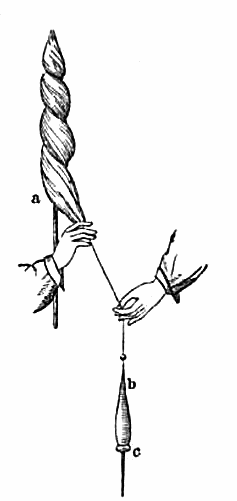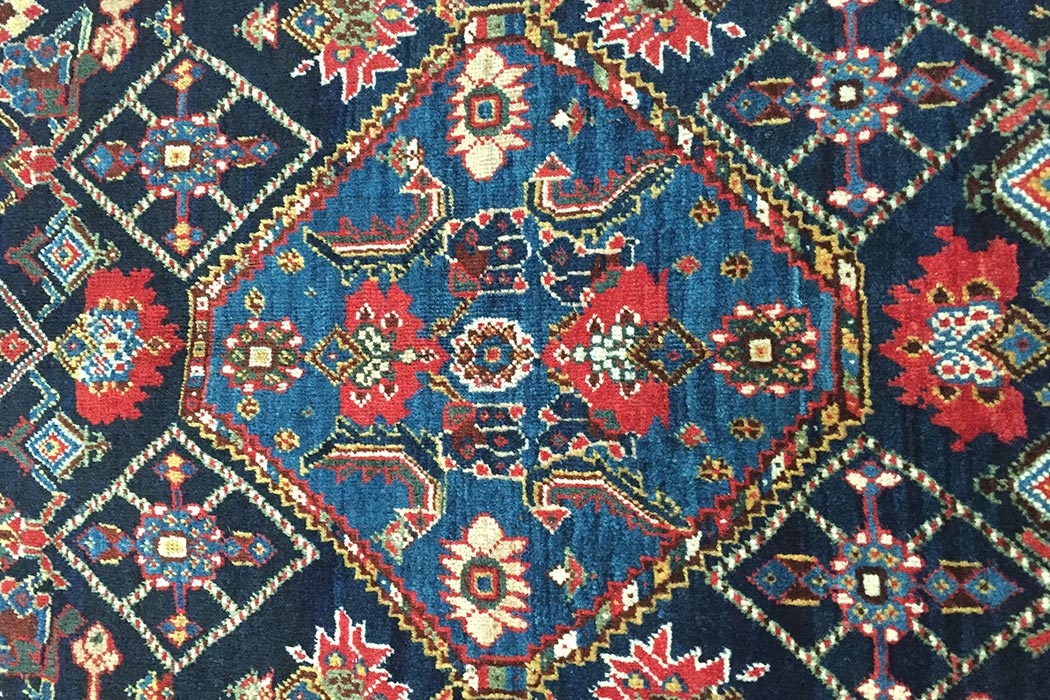The Persian carpet, it seems, is an endangered species. Persian carpets, beautiful, detailed, and sometimes years in the making, hold particular significance for the nomadic, pastoralist Qashqa’i tribe of southwestern Iran, near the city of Shiraz. “Iran’s carpets,” The New York Times reported, “are among the most complex and labor-intensive handicrafts in the world.” However, Qashqa’i carpets have had trouble keeping pace with broader global trends, both aesthetic and economic. Demand for them simply isn’t there, and the cost of manufacturing them is extremely high. Droves of carpet weavers are now looking for jobs with better security and better wages elsewhere.
The craft and expertise associated with weaving these carpets tells a tool-based story: fleece to fiber to finished rug. Touted as the most authentic of Iran’s many varieties of carpet, a Qashqa’i weaving begins with turning a sheep’s wool into fiber. Once the sheep has been shorn, its wool is collected, cleaned, and spun into yarn. The yarn, in turn, is dyed with vegetative materials that weavers have gathered during their travels. They then weave the dyed yarn into carpets, composed of hundreds of individual knots per square inch, and featuring geometric designs and a plethora of decorative motifs.
“The personal selection, the proximity to ‘nature’ and the locality of origin are seen as essential in both guaranteeing the provenance and authenticity of the woven carpet,” design historian Patricia Baker writes in the Journal of Design History, describing how the creation of these carpets falls completely in the domain of Qashqa’i women. “It is these elements… which directly contribute to the woman-weaver achieving individuality and authenticity in design and colouration in her work.”

Turning fleece into fiber requires the use of a spindle–a long, straight rod, usually made of wood, that gathers the spun thread. A spinner will take small chunks of a clean, shorn fleece and have the spindle pull the fleece ever-so-gently into a narrower and narrower string. This narrow string is then carefully gathered along the end of the spindle. A spinning wheel then pulls the fleece evenly, turning turn it into thread. The spindle typically sits above the wheel. Historically, however, the more common form of spindle is the kind that dates back to the Neolithic, called a drop spindle. The drop spindle hangs in front of the spinner, allowing a person to move about and keep spinning. The spinning wheel, which spins thread more quickly, requires the spinner to sit in front of it. The drop spindle, by contrast, uses gravity to pull the fleece into the thread. The drop spindle is usually weighted by a whorl.
Whorls are among the most abundant artifacts in the archaeological record. Unlike spindles, they are made from a variety of materials that do not deteriorate over time. The whorl is a cylindrical disc-shaped object that fits over the spindle, giving it more weight. As the wool is pulled downward by the combined weight of the spindle and whorl, the spinner can start to swing the spindle. This weighted momentum helps pull the fleece into the desired fibrous string.
For thousands of years, spinners have used everything from antler bone to ceramics to polished rocks to create whorls. Some whorls are small, measuring just a few millimeters in diameter, and some span almost 30 inches. Some are lavishly decorated; some are but re-purposed bits of broken ceramics with a hole drilled in the center, giving archaeologists little doubt about their purpose. Since the spindle is generally made from materials that do not preserve well, the whorl is often the best proxy in reconstructing a culture’s the fleece-to-fiber technology.
With automated spinning and weaving, rugs can be produced more quickly and at much less expense than the conventional Qashqa’i ones. But the tools traditionally associated with Qashqa’i weaving speak to the cultural durability of the weaving process. Qashqa’i carpets tell a powerful story of a complex technology that women have employed to create their crafts.







